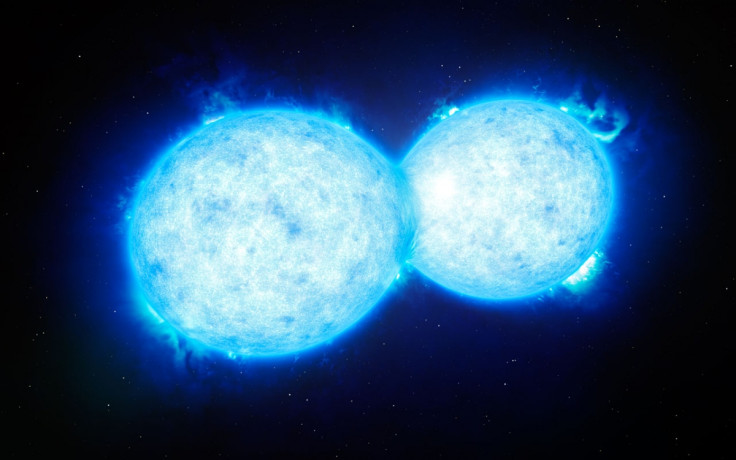Two massive stars are about to smash into each other and no one knows what will happen

A massive double star has been discovered and scientists do not know what will happen when the pair fully collide. The centres of the two stars, in the system VFTS 352, are 12 million kilometres apart and are so close their surfaces now overlap, forming a bridge between the pair.
The stars were found by an international team of astronomers using ESO's Very Large Telescope. They are located in an extreme region of space (around 160,000 light years away) that is the most active nursery of new stars in our nearby universe.
The two stars are very bright, hot and massive – combined they are around 57 times the mass of our sun and surface temperatures reach above 40,000C. Currently the stars share around 30% of their material.
Researchers say these stars are particularly interesting because they are of almost identical size – in most cases of double stars, one is bigger and sucks the smaller in, known as vampire stars. Because they are the same size, material appears to be being shared.
Lead author Leonardo A Almeida of the University of São Paulo, Brazil, said: "The VFTS 352 is the best case yet found for a hot and massive double star that may show this kind of internal mixing. As such it's a fascinating and important discovery." Authors believe strong tidal forces are resulting in enhanced mixing of the stars.
This sort of system is very rare because this phase of their lives is short, meaning it is difficult to catch the collision. Publishing their findings in the Astrophysical Journal, astronomers say there are two possible catastrophic endings for the two stars.
They are expected to either merge to become one single ginormous star or to form a binary black hole. The latter would produce a rapidly rotating and possibly magnetic star. Lead scientist Hugues Sana said: "If it keeps spinning rapidly it might end its life in one of the most energetic explosions in the universe, known as a long-duration gamma-ray burst."
Selma de Mink, lead theoretical astrophysicist on the study, explained the black hole scenario: "If the stars are mixed well enough, they both remain compact and the VFTS 352 system may avoid merging. This would lead the objects down a new evolutionary path that is completely different from classic stellar evolution predictions. In the case of VFTS 352, the components would likely end their lives in supernova explosions, forming a close binary system of black holes. Such a remarkable object would be an intense source of gravitational waves."
Either way, the team says the outcome would be a breakthrough in stellar astrophysics as it will provide an insight into massive binary star systems – a currently poorly understood process.
© Copyright IBTimes 2025. All rights reserved.






















